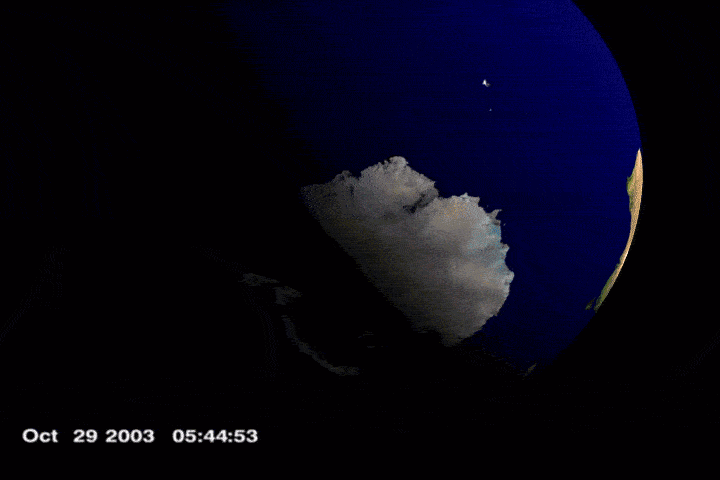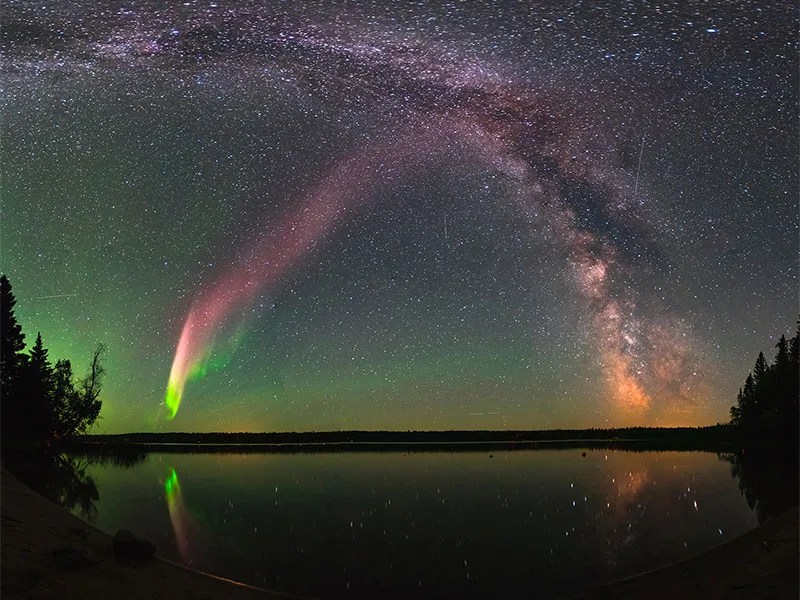By Elizabeth Landau
Do-it-Yourself Science: Because We Are All Explorers
In the mornings, Sylvia Beer sits at the desktop computer in her living room with a cup of coffee and looks for ridges on Mars. Her town of Wodonga, Australia, gets so hot that in summer she begins scanning Mars images at 4 a.m., when she takes medication for Parkinson’s disease. The condition sometimes affects her memory and movement — she uses a cane or walker to get around, and can’t walk as far as she’d like — but her passion for learning about space has not suffered.
“It’s been since I was about 5 years old. It’s been in my blood since then,” said Beer, now 61. “Just the wonderment and trying to understand how everything goes together and works — I just love it.”
Beer is one of hundreds of thousands of people worldwide participating in “citizen science” initiatives using NASA data that allow anyone, regardless of education or background, to collaborate in real scientific research. Many enthusiastic amateurs have day jobs as wide ranging as making furniture, teaching and leading cruises in the Arctic and Antarctica. And the projects they collaborate on make valuable discoveries: networks of ridges on Mars, a meteor impact on Jupiter and even previously unknown systems of planets orbiting other stars, known as exoplanets.
Citizen Scientists of History
Meet some amateur scientists who made a mark on history
Anna Atkin
Capturing the scientific process in photographs started with Anna Atkins. She was a 19th century English botanist who laid the groundwork for scientific books illustrated with photography.
She created cyanotypes, images made by placing objects directly onto light-sensitive paper. Using this method, Atkins captured the plants and algae she was studying in the form of beautiful silhouettes that provided a detailed and accurate representation of their form. Some consider her Photographs of British Algae: Cyanotype Impressions the first example of a book that uses photographs as illustrations.
Five Extraordinary Citizen Science Discoveries
By Bill Dunford
 Lost (and Found) in Space
Lost (and Found) in Space Whole New Worlds
Whole New Worlds Comet-o-Rama
Comet-o-Rama There’s a Mysterious Purple Light in the Sky -- It’s Named Steve
There’s a Mysterious Purple Light in the Sky -- It’s Named Steve A “Bizarre” Star Yields Some of Its Secrets
A “Bizarre” Star Yields Some of Its Secrets
Show All
Citizen Science Opportunities
The following is a partial list of citizen scientist projects that involve NASA personnel.
JunoCam
Process and discuss images from NASA’s Juno spacecraft, currently orbiting Jupiter:
https://www.missionjuno.swri.edu/junocam
Planet Four: Ridges
Help scientists explore the surface of Mars:
https://www.planetfour.org/
GLOBE Observer
Collect environmental observations of clouds and mosquitoes:
https://observer.globe.gov/
Aurorasaurus
Help scientists by collecting observations of aurorae:
http://www.aurorasaurus.org/
Backyard Worlds: Planet 9
Search data for exotic objects such as brown dwarfs and the possible Planet 9:
https://www.zooniverse.org/projects/marckuchner/backyard-worlds-planet-9
Disk Detective
Search for debris disks around stars:
https://www.diskdetective.org/
Project Panoptes
Find out how to build low-cost, robotic telescopes to find transiting exoplanets:
http://www.projectpanoptes.org/
Landslide Reporter
A project to build open global landslide data for science and decision-making.
https://landslides.nasa.gov
NASA Solve
A one-stop-shop website for opportunities to participate in challenges, prize competitions, and citizen science activities that develop solutions for problems related to NASA’s mission.
https://www.nasa.gov/solve/




































